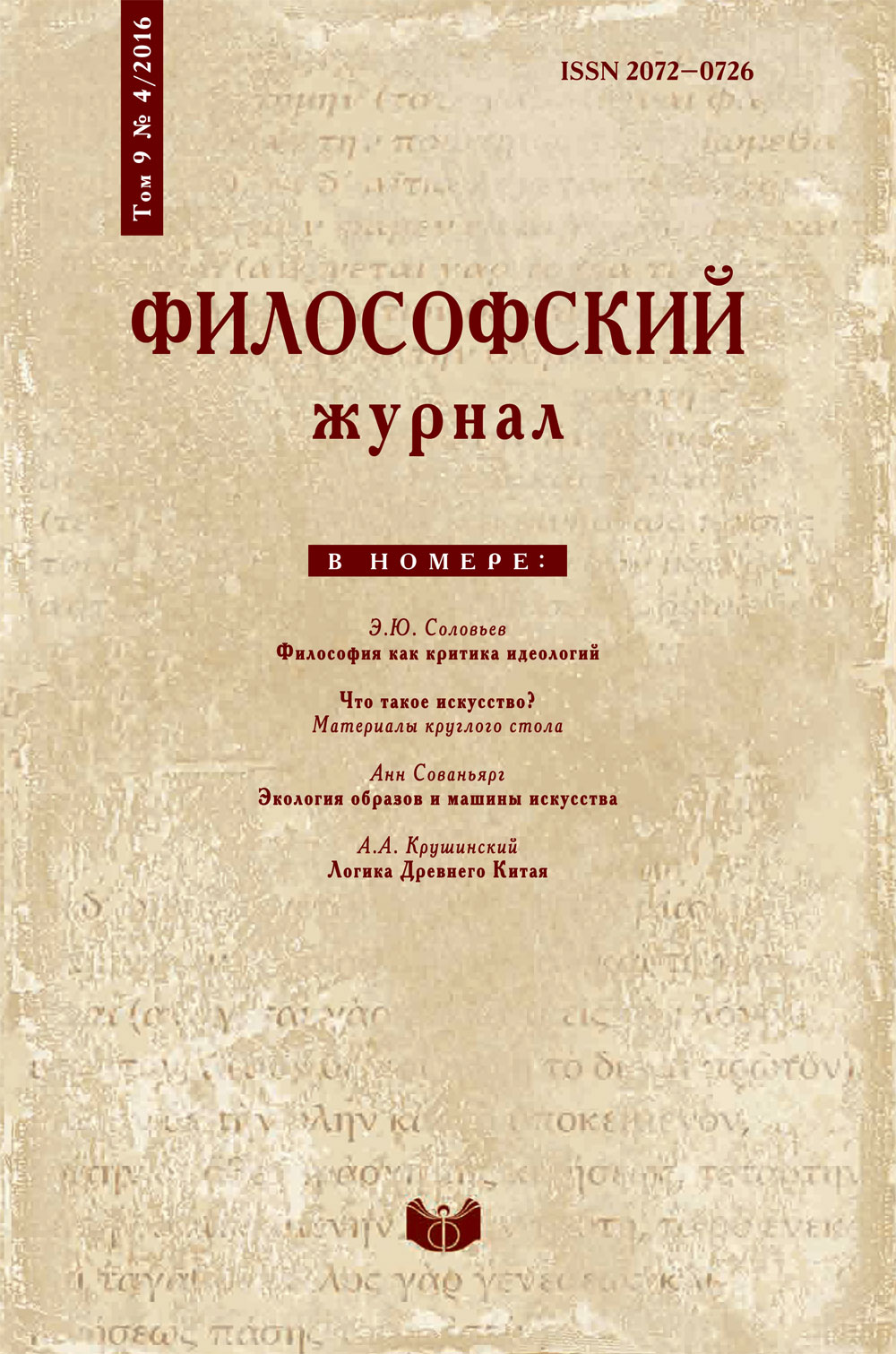Экология образов и машины искусства
DOI:
https://doi.org/10.21146/2072-0726-2016-9-4-48-62Ключевые слова:
образ, движение, материя, индивидуация, киноАннотация
В данном исследовании автор размышляет о делезианской теории образа, представляющей собой альтернативу знаково-семиотической традиции в трактовке этого понятия, основанной на репрезентативной и психической роли образа. Прорабатывая обширный корпус текстов Делёза, автор статьи фокусируется на исследовании образа-движения, о котором Делёз пишет в работе «Кино», и индивидуации как принципа механики образа. В рамках этого философского подхода образы рассматриваются как действия аффектов и сил, не специфичные для искусства как некоей культурной целостности, а принадлежащие к тому же порядку, что и материя, и обладающие длительностью и протяженностью (в бергсонианском смысле). Кинематографический режим (возможности монтажа и кадрирования) подчеркивает динамический характер возникновения образа в результате индивидуирования материи. Так действие образа может быть описано не через уподобление и схему интерпретации, а через эксперимент и процесс становления. В данной статье получает свое развитие ряд важных направлений делезианской эстетической мысли, а также предлагаются оригинальные интерпретативные решения, разъясняющие ключевые понятия философии Делёза.






